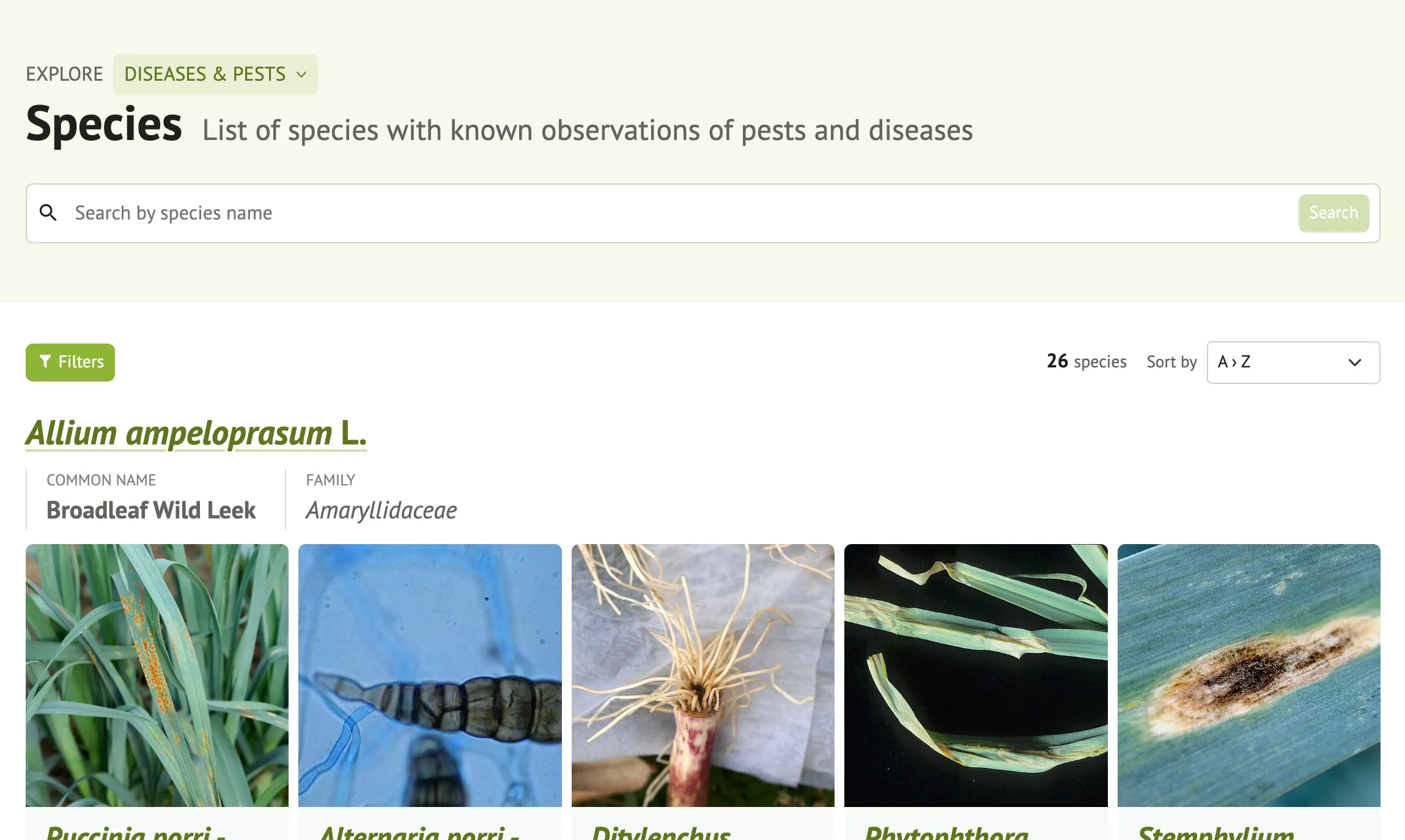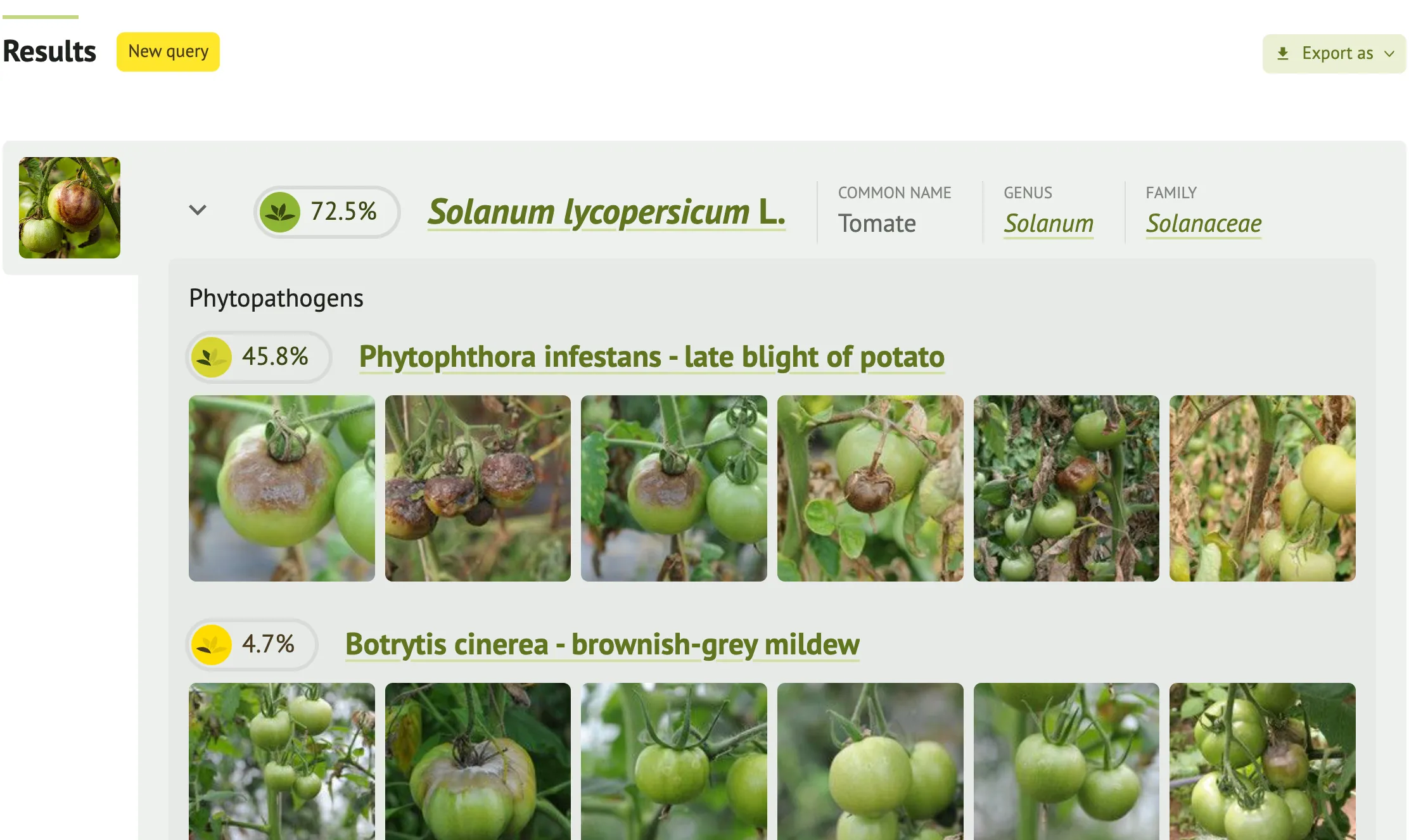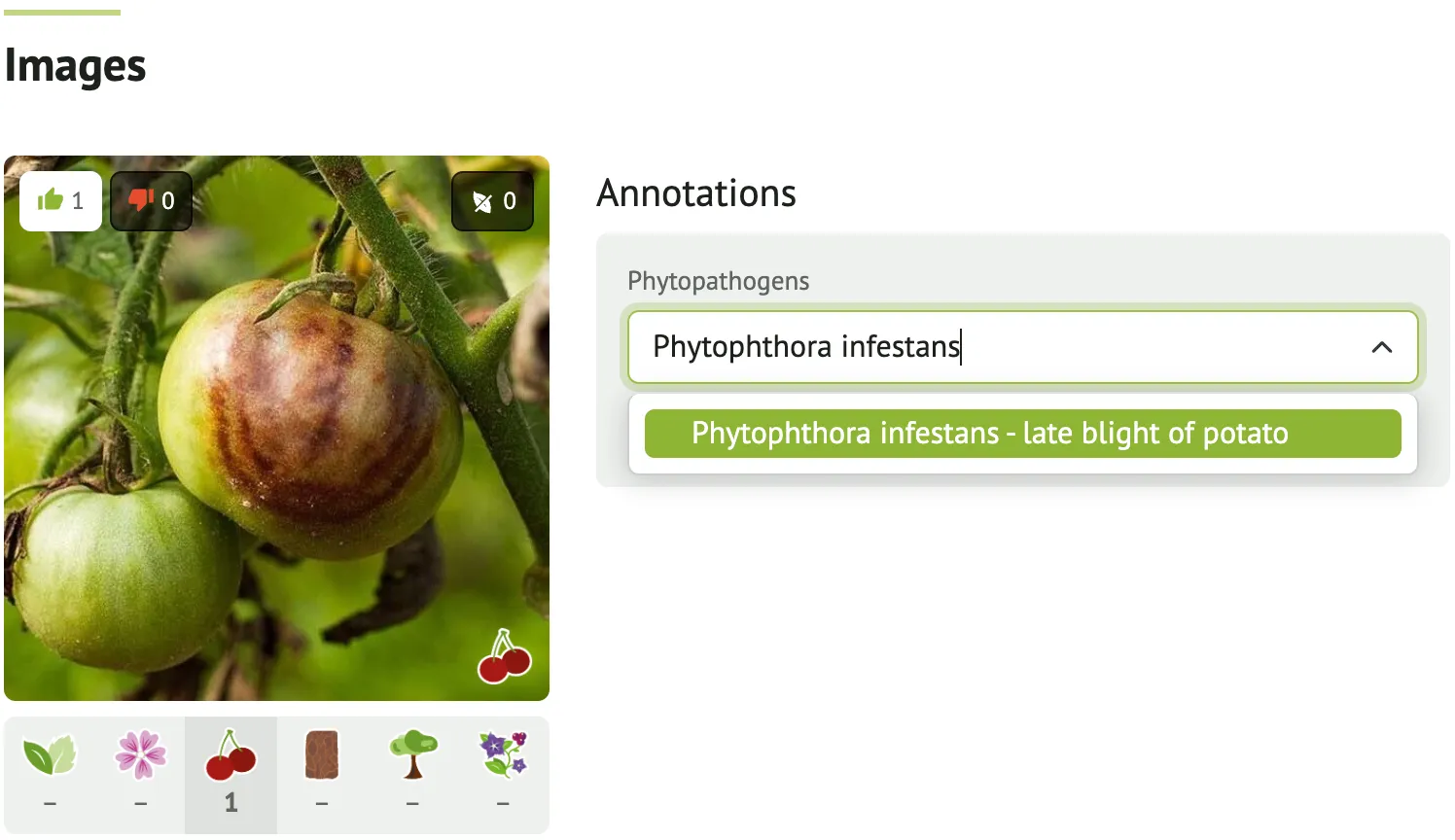Disease and Pest Identification
We are pleased to introduce a new beta feature in the Pl@ntNet application: the ability to identify plant diseases and pests from images. This experimental feature aims to help users detect visible symptoms caused by common pathogens or pests on a limited set of plant species.
Pl@ntNet has long helped users identify plant species through visual recognition, but this new feature extends the application’s usefulness by providing information on plant health. By uploading photos showing signs of disease or infestation (leaf spots, discoloration, deformations, or insect presence), users can receive preliminary suggestions about potential problems affecting the plant.
This feature is still under development and currently supports only a limited list of species and pathologies. Its predictions should be considered as informative advice, not a professional diagnosis, and are not intended to provide information on treatments.
We invite you to share your feedback to improve this feature and expand its scope in future versions!
How can I access this new feature?
Section titled “How can I access this new feature?”To access this beta feature, we need to authorize your Pl@ntNet account. Please fill out the following form: https://forms.gle/BYH7WC9d8eJEm3dk9. We will inform you as soon as your access has been granted, generally within 3 business days.
To go further
Section titled “To go further”Help us cover more species: share your datasets!
Section titled “Help us cover more species: share your datasets!”If you are an expert Pl@ntNet user and have access to high-quality images showing plant diseases or pests (with reliable annotations), we would be delighted to receive your help! The contribution of these datasets can significantly improve the accuracy and coverage of our new disease identification function. If you wish to share data or collaborate, feel free to contact us (mentioning it in the comment field of the form) - we are happy to co-build this feature with the community.
Which species are already covered?
Section titled “Which species are already covered?”We are continuously importing new data to cover a larger number of species, so don’t forget to visit this page for an updated overview of all currently supported species: https://identify.plantnet.org/diseases/species/tags/phytopatho
For example, in April 2025, we already covered the following species:
-
Allium ampeloprasum - Leek
-
Allium sativum - Garlic
-
Apium spp - Celery (general for the genus)
-
Beta vulgaris - Beetroot
-
Capsicum annuum - Pepper
-
Citrullus lanatus - Watermelon
-
Citrus × aurantium - Bitter orange
-
Citrus × latifolia - Tahiti lime
-
Citrus × limon - Lemon
-
Coffea arabica - Arabica coffee
-
Cucumis melo - Melon
-
Cucumis sativus - Cucumber
-
Cucurbita pepo - Zucchini
-
Daucus carota - Carrot
-
Foeniculum vulgare - Fennel
-
Fragaria spp - Strawberry (general for the genus)
-
Lactuca sativa - Lettuce
-
Lathyrus oleraceus - Pea
-
Musa acuminata - Banana
-
Musa balbisiana - Wild banana
-
Nicotiana tabacum - Tobacco
-
Raphanus raphanistrum - Wild radish
-
Solanum lycopersicum - Tomato
-
Solanum melongena - Eggplant
-
Solanum tuberosum - Potato
-
Spinacia oleracea - Spinach
-
Vitis vinifera - Grapevine
Explore observations of plants affected by diseases
Section titled “Explore observations of plants affected by diseases”With this new functionality, Pl@ntNet users will also be able to explore community observations of plants affected by various diseases and pests. These concrete examples, provided by other users and institutes, give valuable indications on how different symptoms appear on specific species. Whether you are looking to identify a problem or learn more about plant health, this growing collection of annotated images will help you recognize and compare visible signs of stress in plants.

Identify plants affected by diseases or pests
Section titled “Identify plants affected by diseases or pests”In addition to searching for observations, this feature allows you to identify specific diseases and pests directly from your own images. By uploading a photo that clearly shows symptoms - such as spots, wilting, discoloration, or the presence of insects - Pl@ntNet will analyze the image and suggest possible causes. These suggestions are based on visual similarities with verified cases in our database and aim to help you quickly understand what may be affecting the plant.
Disease identification is available at the following address: https://identify.plantnet.org/fr/diseases/identify and works almost the same way as the classic Pl@ntNet identification you are used to. In addition to species identification, Pl@ntNet will also propose a set of diseases for each species and for each source image.

For now, disease identification cannot be shared on the platform like the usual plant observation to avoid potential identification errors spreading in our datasets.
Annotate existing plant observations with disease information
Section titled “Annotate existing plant observations with disease information”As part of this beta version, you will also be able to annotate existing plant observations with information on diseases or pests. If you recognize symptoms on an image or if you know the specific problem affecting the plant, you can add or suggest annotations to enrich the database. These contributions are essential to improve the accuracy of the identification function and constitute a more complete resource for the entire Pl@ntNet community.
Each image of an observation can receive a set of annotations. To annotate an image, select the “Phytopathogens” annotations in the Annotations section next to the image and search for a specific value. If the disease you identify on your image is not in the list and you have more than 10 images illustrating it, please contact us here.


Research effort behind this feature
Section titled “Research effort behind this feature”This new disease and pest identification feature is the result of ongoing research on phytosanitary diagnostics using computer vision and deep learning techniques. It builds on recent advances in image-based plant pathology and benefits from datasets created by experts to train and evaluate our models.
This collaboration between science and citizen observation is at the heart of Pl@ntNet’s mission: to transform collective intelligence into usable tools for biodiversity and plant health monitoring.